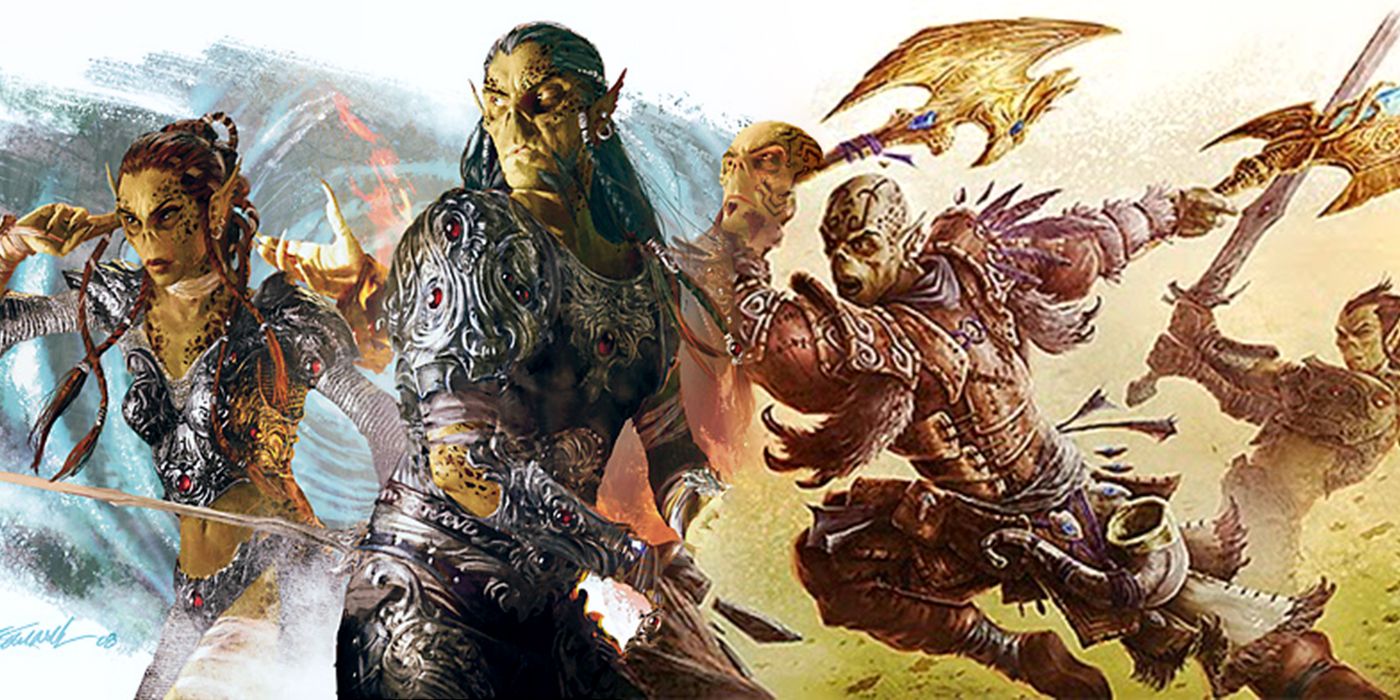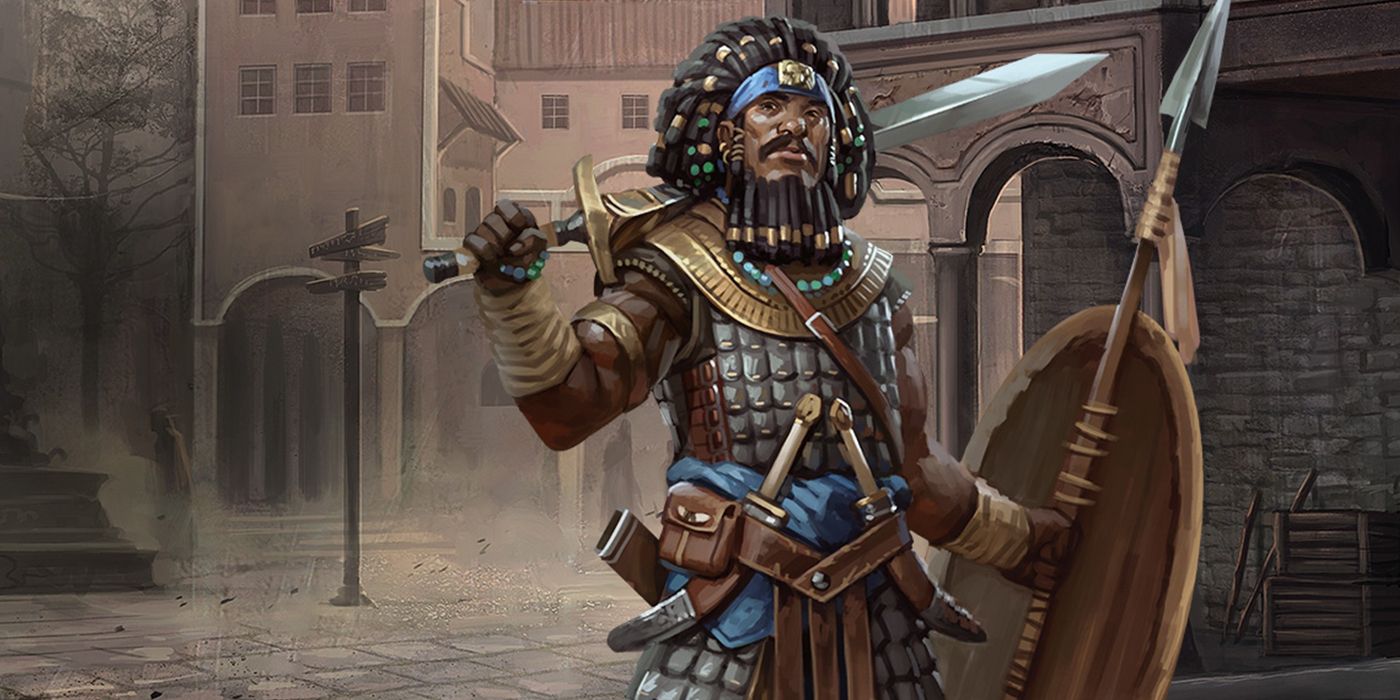In Baldur’s Gate 3, the player’s choice of character class is arguably the most important decision they make. Each class provides different abilities and utility when exploring the world and engaging in combat. One such class is the Fighter, who begins the game with the ability to wield any weapon and wear any armor.
The Fighter in Baldur’s Gate 3 is one of the simplest classes to understand when looking at it. The Fighter, as their name suggests, fights. More specifically, the Fighter class is an expert in using weapons and armor of all kinds and can thus adapt easily to different combat situations. The Fighter subclasses each offer more ways for the Fighter to excel on the battlefield, be it through specialized combat maneuvers, the addition of magic to their arsenal, or simply increasing their survivability and critical hit potential.
Updated on August 9, 2023, by Thomas Hawkins: With the full release of Baldur’s Gate 3, players are able to choose from all three of the Fighter subclasses and reach the level cap of 12, so this guide has been updated to explain the abilities each subclass grants beyond level five.
Updated on February 23, 2024, by Thomas Hawkins: Now that Baldur’s Gate 3 has been out for a while and players have sought out it’s countless magical items, this guide was in dire need of an update to discuss how those items might benefit the various subclasses. Information on Multiclassing has also been included to offer further guidance to players looking to get the most out each subclass.
Battle Master
The Battle Master subclass is best known for its access to Superiority Dice, a limited resource they can spend to execute maneuvers and boost the damage of their attacks. Battle Master Fighters start gaining their subclass abilities at level 3, where they select three Battle Master Maneuvers and gain access to four Superiority Dice (1d8) per short rest.
Whenever a Maneuver involves making an attack, that attack deals additional damage equal to a roll of the Superiority Dice.
|
Maneuver |
Effect |
|
Commander’s Strike |
Expend one attack from your attack action and a bonus action to direct an ally to strike a foe. That ally uses their reaction to make a weapon attack on their turn. |
|
Disarming Attack |
Spend a superiority die to make an attack that deals an extra 1d8 damage and forces the target to drop their held weapons if they fail a strength save. |
|
Distracting Strike |
Distract your target while attacking, giving allies advantage on their next attack roll against that target. |
|
Evasive Footwork |
Impose Disadvantage on melee attacks against you for one turn. |
|
Feinting Attack |
Use both your action and bonus action on a turn to attack with advantage and deal an extra 1d8 damage. |
|
Goading Attack |
Deal an extra 1d8 damage and force the target to make a wisdom save. If they fail, they get disadvantage on all attack rolls against targets other than you for one turn. |
|
Manoeuvring Attack |
Deal an extra 1d8 damage and raise an ally’s movement speed by 50% for one turn. That ally does not provoke opportunity attacks during that turn. |
|
Menacing Attack |
Deal an extra 1d8 damage and also frighten the target if they fail a wisdom saving throw. |
|
Precision Attack |
Roll a Superiority die and add its result to your next attack roll. |
|
Pushing attack |
Deal an extra 1d8 damage and also push the target back 4.5m if they fail a strength saving throw. |
|
Rally |
Spend a superiority die to give an ally 8 temporary hit points. |
|
Riposte |
Spend a superiority die when a hostile creature misses you with a melee attack to retaliate, dealing 1d8 extra damage. |
|
Sweeping Attack |
Swing your weapon in a sweeping arc to hit multiple enemies at once. This attack rolls your superiority die to determine damage dealt. |
|
Trip Attack |
Spend a superiority die to make an attack that deals an extra 1d8 damage and knocks the target prone if they fail a strength saving throw. |
These Maneuvers allow the Fighter to control the battlefield and aid their allies while pressing the attack. On reaching level seven, the Battle Master gains one more Superiority Dice, allowing them to use more Maneuvers per short rest, and also gains two more maneuvers from the above list.
At level 10, the Battle Master gains “Improved Combat Superiority,” changing their Combat Superiority Die from 1d8 to 1d10. This improves the maximum amount of bonus damage they can deal when using a Combat Maneuver. Finally, at level 11, the Battle Master gains two more Combat Maneuvers from the list.
Multiclassing & Equipment
Combat Maneuvers are a fantastic addition to any martial class, so players will likely get lots of mileage out of mixing this subclass with Paladin, Barbarian, and Ranger. Monks can make use of Combat Maneuvers too, though many of the Monk’s best subclass features require heavy level investment and are thus tricky to work into multiclass builds.
Since the Battle Master specializes in Combat Maneuvers, they can benefit a lot from weapons with longer reach. Great options early on include the Monster Slaying Glaive (Act 1, Sold by Roah Moonglow at the Goblin Camp), the Sorrow Glaive (Act 1, Inside the Druid Grove’s Vault), The Skinburster Halberd (Act 1, in the Inquisitor’s Chamber at the Githyanki Creche), The Returning Pike (Act 1, Sold by the Goblin Trader at the Goblin Camp), and the Unseen Menace Pike (Act 1, Sold by the Trader in the Githyanki Creche.) During Act 2 players can grab the Drakethroat Glaive from Roah Moonglow in Moonrise, which allows them to buff weapons with elemental damage and offers tremendous versatility.
Eldritch Knight
The Eldritch Knight subclass allows the fighter to learn a small selection of spells from the schools of Evocation and Abjuration, allowing them access to magic to buff themselves and damage their foes. They gain the ability to cast first-level spells once they reach Fighter Level three, with two spell slots to use when doing so.
They also learn two Wizard Cantrips and two Wizard Spells from the aforementioned Spell Schools. At level three, they also gain “Weapon Bond,” which links the weapon they hold to them, preventing them from being disarmed and causing it to return when thrown. This effect lasts until they long rest and can be applied again or used on a different weapon.
They gain one new spell at level four and then get one more at level seven. They also gain two second-level spells at level seven, further strengthening their spellcasting and offering them access to more potent spells. Level seven is also where Eldritch Knights get “War Magic,” allowing them to cast a cantrip and then make a melee attack as a bonus action.
While not always the strongest option, this can be used to activate spells like Blade Ward without giving up an attack. It can even be used to cast True Strike without giving up an attack, though this won’t make it useful mid-combat.
At level ten, Eldritch Knights learn one more second-level spell, get one more cantrip, and gain “Eldritch Strike.” Eldritch Strike gives a creature the Eldritch Knight successfully hits with their melee attack disadvantage on saving throws against the Eldritch Knight’s magic, but only until the end of the Knight’s next turn. This can be great for setting up a foe for a powerful spell.
The Eldritch Knight serves as a way for Fighters to gain limited access to magic and, as a result, the ability to buff themselves and inflict elemental damage. Since they cast spells using the Intelligence stat, the Eldritch Knight subclass is particularly well suited to the Githyanki race’s default bonus stats, though the full release allows players to adjust racial stat bonuses however they wish.
Multiclassing & Equipment
When Multiclassing using the Eldritch Knight subclass, it’s important to understand how spell slots are calculated. The Eldritch Knight subclass isn’t a full caster, so only 1/3 of its level (rounded down) is added to the effective caster level when multiclassing. As an example, a level 3 Eldritch Knight with one level in Wizard would have an effective caster level of 2. Eldritch Knight is an excellent defensive subclass thanks to its access to spells like Shield, and it can further strengthen its defenses with Abjuration Wizard levels. This allows them to utilize the Arcane Ward to protect themselves and their allies from incoming damage, charging the ward with every spell they cast.
Outside of this, players could also use Eldritch Knight as their subclass when planning to multiclass heavily into other spellcasting classes, taking spells that are defensive in nature or otherwise require no attack roll or saving throw to be effective. This allows players to remain at low intelligence and still benefit from the Eldritch Knight spells they choose, freeing up those points to spend on stats that benefit their chosen spellcasting class.
It is important to note that there are certain weapons whose enchantments only function when bound using either Weapon Bond or the Warlock’s Pact of the Blade. In the release version of the game, only one of these weapons is currently accessible, this being the Charge-Bound Warhammer in Act 2. Purchased from Dammon, this warhammer gains +1 to attack and damage rolls and deals an additional 1d6 lightning damage when it is bound to its wielder. The Warped Headband of Intellect, found during Act 1 by killing Lump the Enlightened in the Blighted Village (or at any point afterwards after summoning them using their horn), is an excellent option for players who want to take advantage of the Eldritch Knight’s abilities during the early-mid game without investing in intelligence. The aforementioned headband sets the wearer’s intelligence to 17 while worn.
Champion
The Champion subclass allows the Fighter to get a handful of simple abilities that make them better at fighting and feats of strength. This begins with “Improved Critical Hit” at level three. This reduces the number a fighter must roll on their attack roll to land a critical hit by 1. In essence, landing critical hits becomes easier. This can stack with other effects that reduce the target number for critical hits, potentially enabling the Champion to become a critical hit monster.
At level seven, the Champion gains “Remarkable Athlete: Proficiency” and “Remarkable Athlete: Jump.” The former allows them to add half their proficiency bonus to any skill check that uses Strength, Dexterity, or Constitution that they are not already proficient with. The latter increases their jump distance by 3m.
Multiclassing & Equipment
The Champion subclass is simple and effective, providing straightforward bonuses that can benefit many other classes. This is especially true of Rogues, who benefit immensely from the Improved Critical Hit effect. When stacked with equipment that further lowers the target number for critical hits (which stack in Baldur’s Gate 3), it becomes possible to create a critical hit monster very easily.
The weapons that reduce the target number of critical hits are the Knife of the Undermountain King (Act 1, sold in the Githyanki Creche), the Dead Shot (Act 3), and Bloodthirst (Act 3). Players can also use the Covert Cowl (Act 2, Under the Last Light Inn, held by a monster) to reduce the target number by 1 when obscured, later replacing it with Sarevok’s Horned Helm during Act 3 since that doesn’t require the wearer to be obscured. The Shade-Slayer Cloak in Act 3 does the same, but only while obscured. Combining these items can be incredible for dealing huge amounts of damage.
Baldur’s Gate 3 is available now for PC, Mac, and PS5.




